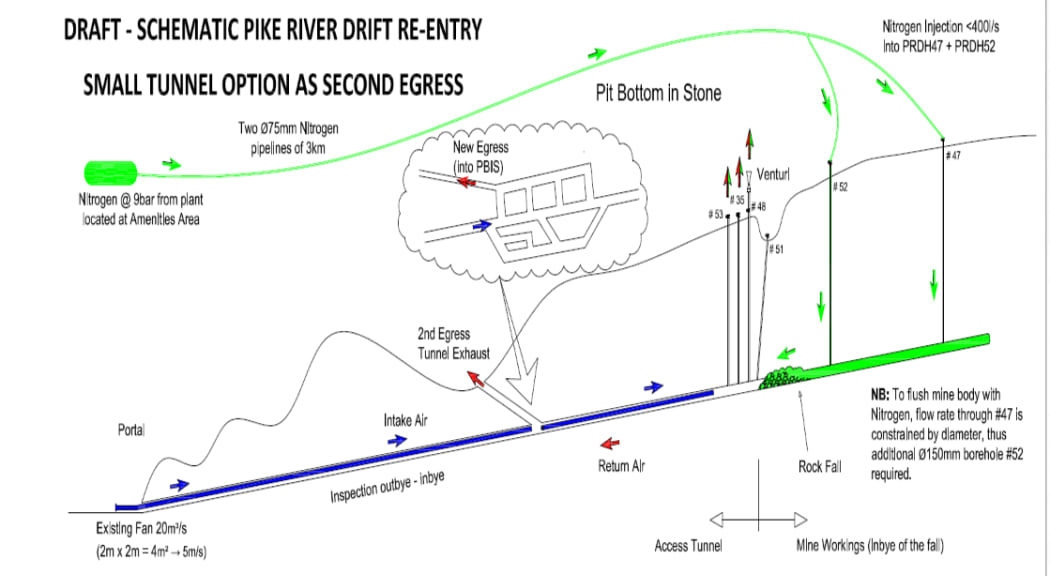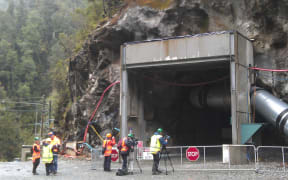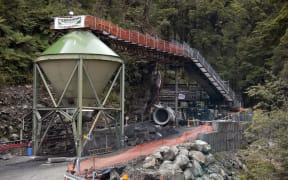Key parts of the Pike River mine's electrical infrastructure could have survived the multiple explosions that shook it nearly eight years ago, the Pike River Recovery Agency has revealed.

The entrance of the Pike River coal mine where 29 men were killed by an explosion. Photo: petervick167/123RF
Media were briefed today by the Pike River Recovery Agency on progress in finding a safe option for a manned re-entry as far as a huge rockfall.
Pike River Recovery Agency chief operating officer Dinghy Pattinson said an area of interest would be the 400m network of tunnels off to the side of the entry tunnel that could hold important clues as to what caused the mine to explode.
While a lot of focus had been on recovering the bodies of the 29 men who died in the mine, of equal importance to the families and authorities was trying to work out why it exploded.
Pike River Recovery Minister Andrew Little said if this could be established then manslaughter charges could follow, something a number of the families had been fighting for.
Mr Pattinson today said numerous inquiries, including a Royal Commission, had established there were dangerous levels of methane in the mine but had so far not been able to work out the ignition source.
"There was about five or so different options that they said could have caused the explosion. Now whether we can find out what caused it, who knows but we might be able to eliminate some of those options."
Possible causes included a diesel engine overheating, contraband taken into the mine such as cigarettes, electric motors or frictional sparking caused by work being done in the mine.
Another possibility and the one Mr Pattinson said he hoped to count in or out by re-entering the entry tunnel, was arcing in the mine's electrical system.

A draft Pike River mine re-entry map showing the tunnel connections. Photo: Supplied/Pike River Recovery Agency
This was contained in a little-talked about series of tunnels off to the side of the main entry tunnel known as pit bottom in stone.
"Thats an unknown what condition the equipment will be in because there has been four explosions through that mine. A lot of the gear in the pit bottom mine bottom stone area may still be intact because that was out of the direct line of the blast," Mr Pattinson said.
Footage of the four explosions showed debris being blown out of the mine portal and flames leaping from the ventilation shaft.
Mr Pattinson said methane blasts tended to travel in a relatively straight line.
"The blast actually goes for its point of exit so the main blast would have gone out of the main tunnel entrance as you saw in the video footage at the time of that explosion and some of it would have gone up the vent shaft as well ... some over pressure would have gone around those road ways [in the pit bottom stone area] but the bulk of it would have gone straight out the direction of the tunnel."
The existence of this network of tunnels off to the side of the entry tunnel was what saved Daniel Rockhouse that day.
He was refuelling his vehicle in this part of the mine when the explosion shot up the tunnel, knocking him to the ground but leaving him able to walk out to safety.
Mr Pattinson said, if they get approval, a team of six forensic investigators would spend a considerable amount of time poring over the mine's electrical system along with Mr Rockhouse's vehicle, which remained where he left it nearly eight years ago.
"The whole purpose of the recovery, and I see our role there, is to support the police. It is a crime scene and we're trying to find out if we can help in finding out what happened and what went wrong."
Starting next week a risk analysis of the entry plan would be done.
This would then be reviewed by a fresh set set of eyes before a plan was presented to the minister for final sign off at the end of October.







